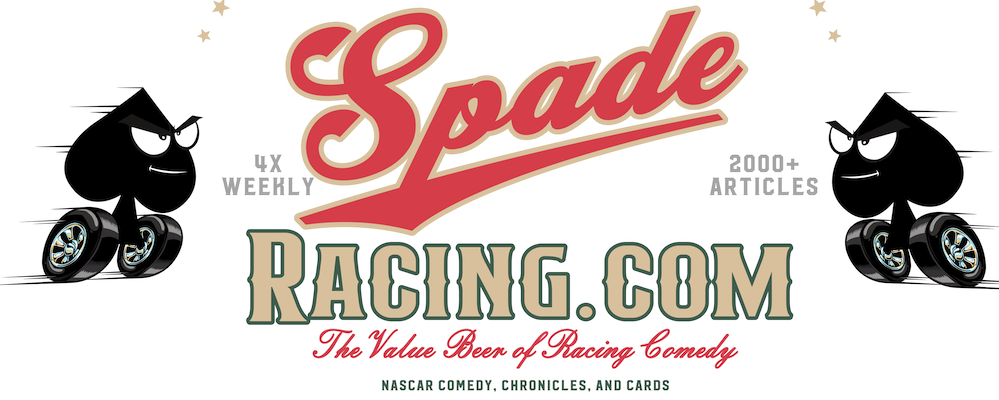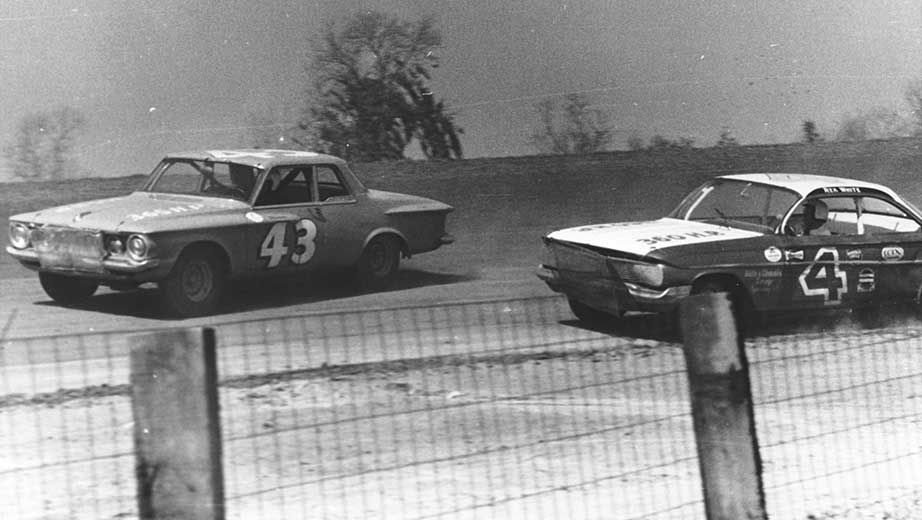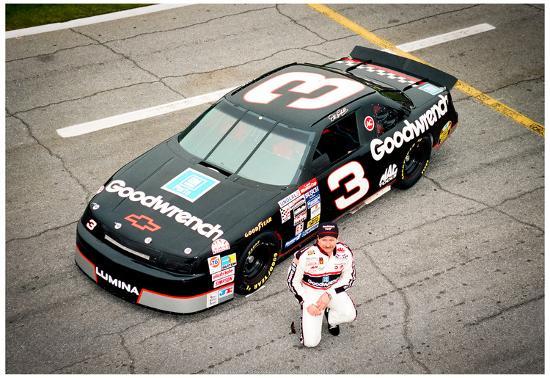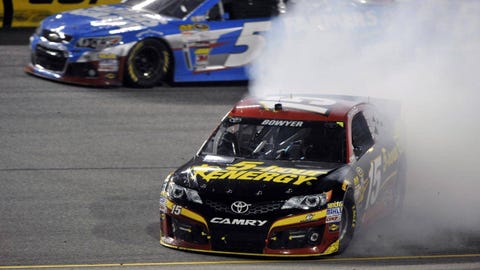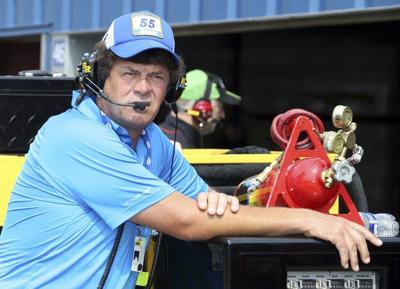 |
| Next year Ford switches to the Mustang body style in Cup |
Last year’s “Silly Season”—the period when drivers change teams, sponsors, and careers—was arguably the most-impactful in the sport’s recent history with Dale Earnhardt Jr. retiring, Matt Kenseth (eventually) going to a partial schedule, and super-teams such as Hendrick Motorsports making wholesale changes. This offseason isn’t much different—we’re only a dozen or so days out from Homestead and there’s already some major changes in the pipeline, and that doesn’t include Cole Whitt’s retirement. Here’s where we stand so far:
What happened to Furniture Row Racing? The little team that could shut down merely a year after winning the drivers’ championship with Martin Truex Jr. In short, the impending loss of sponsor 5-Hour Energy, combined with Joe Gibbs Racing reportedly looking to increase the cost of its alliance, saw driver Truex leave FRR, leading to owner Barney Visser simply shutting the team down.
Wait, so where is Martin Truex Jr. going? The pride of New Jersey will be driving the #19 Toyota for Joe Gibbs Racing, with sponsor Bass Pro Shops and crew chief Cole Pearn in tow. The move keeps him in the Toyota/TRD fold and in top-flight equipment.
 |
Carlos Slim Domit--who'd have pegged
him as a major Silly Season factor? |
So what about Daniel Suarez? And Arris? Daniel Suarez, former driver of the #19 JGR Toyota, is now a free-agent. While originally rumored to go to the #95 Leavine Family Racing team (more on them later), he’s now heavily rumored to wind up at Stewart-Haas Racing in the 41 car. As for Arris, Carlos Slim Domit—billionaire telecommunications magnate and the broker of the sponsorship between Arris and Suarez—has said they plan to continue supporting Suarez for the near future. It remains to be seen if Arris will split sponsorship between JGR and Suarez’s new team, if one of Slim’s companies will sponsor Suarez while Arris will split off to sponsor Truex, if Arris/Slim will negotiate a buyout, or if this will somehow become even MORE confusing. Arris is widely rumored to be signed to JGR through 2019.
Wait—Suarez is going to the #41? Yep, that looks like the plan.
So what about Kurt Busch? In a near repeat of last year’s Silly Season drama, Kurt Busch is again a free-agent. Kurt’s valuable not only for his winning ways but for his Monster Energy sponsorship, which is specifically attached to him.
So where is Kurt driving in 2019? All signs point to Kurt Busch driving the #1 car for Ganassi Racing next year. What remains to be seen is how Monster will be worked into the team’s sponsorship plan—if they’re replacing someone or if they’ll simply bump a sponsor like McDonalds or Cessna to the 42 car.
Hmm…but if Kurt winds up in the 1 car, what happens to Jamie McMurray? Jamie Mac seems likely to have driven his last season as a full-time driver. It has been widely reported that Chip Ganassi has offered Jamie a “farewell” ride in a third car for the Daytona 500, then a management role with the company.
 |
Will Jamie Mac wave goodbye to racing
at the 2019 Daytona 500? |
But why? Jamie McMurray was, and is, a good driver with sponsorship appeal. Problem is that it seems like his major sponsors (Cessna, McDonalds, Gear Wrench, etc.) were all through Ganassi, making a driver will outside sponsorship very appealing. Also, having to be compared to teammate Kyle Larson doesn’t help matters.
OK, ok—so what’s this about the 95 car? The only manufacturer change announced so far has the 95 Leavine Family Racing team switching from an RCR/Chevy alliance to a JGR/Toyota alliance, hiring Matt DiBenedetto as their driver.
So Kasey Kahne is done? Yep. Health issues forced him out of the 95 car and he has announced the end of his stock car racing career, although he plans to continue racing sprint cars.
But wasn’t Christopher Bell supposed to take over the 95? We all thought that, didn’t we? With the 95-to-Toyota story heating up people immediately put Daniel Suarez there for the last year of the Arris/JGR deal. Then, once it became apparent that Suarez was likely done at JGR, people tabbed Xfinity wunderkind Christopher Bell for the ride, similar to how Erik Jones ran a year for FRR before coming to JGR. However, Toyota—who has backed Bell’s efforts for years—has reportedly made it known that they want him to get another year of Xfinity experience under his belt (although some races in a 2nd LVR car in Cup aren’t out of the question).
 |
While Jimmie Johnson's new look hasn't
been unveiled yet, there's a good chance
that the color plum will be involved |
Alright, alright—I know Jimmie Johnson had a bad year in 2018—what changes are Hendrick Motorsports making for 2019? Longtime crew chief Chad Knaus will move over to the 24 team and crew chief for William Byron. Kevin Meendering will take over crew chiefing for the 48 Ally car.
Hold on—“Ally”? What’s that? Oh, you didn’t hear? Ally Financial (an online bank) is taking over for Lowe’s as the 48 car’s sponsor.
LOWE’S IS GONE? WHY? HOW?!? First of all, calm down! Lowe’s announced earlier this year that they wouldn’t be returning to Nascar in 2019. As for why, it seems like a combination of having accomplished their marketing goals and having a recent rough go of it from a financial standpoint. And from the “How” standpoint, Ally is the successor company to the old GMAC/ditech brand that sponsoring HMS cars in the past. Ally will be sponsoring all 36 races on the 48 for the next two years.
Any OTHER changes with Hendrick Motorsports I should know about? Not with the team itself, although they’ll be supplying engines to JTG-D (aka The Kroger Cars) next year.
JTG-D—any changes there? AJ Allmendinger is out of the 47 car. Ryan Preece is in. And no, The Dinger doesn’t have anything set up for 2019.
Hmm, any changes at RCR? Yep—Daniel Hemric is moving up to Cup in the #31 RCR car.
 |
"Who's Your Driver?" is a Virginia marketing
campaign to promote designating a driver, but
it worked out pretty well for this pic |
So what happens to Ryan Newman? Newman will take over the 6 car at Roush Fenway Racing (full-time, by the way).
So what happens to Trevor Bayne? Bayne may or may not have the Advocare sponsorship with him. If he does, he could wind up in Xfinity next year (with JR Motorsports a frequently rumored landing place). If not, he could be the dreaded “Odd Man Out”.
So what happens to Matt Kenseth? It sounds like, barring the need for a substitute driver or a massive deal incumbent upon Kenseth driving, he’s driven his last race and will settle into a management role at RFR.
Boy, that’s a lot to digest—anything ELSE I should be made aware of? Not much, other than Ford switching its Cup car body to the Mustang.
But Chevy’s switch to the Camaro was disastrous last year. If Ford falls flat on its face, would it be a simple case of not having the aero package right, or would it be karmic retribution for essentially giving up on the American passenger car market? Yes.
 |
| The most-recent announcement in this piece |
OK then—what about the teams you HAVEN’T mentioned? No changes are expected with the Penske/Wood Bros. alliance cars. The unmentioned cars of SHR (4, 10 & 14), JGR (11*, 18 & 20), HMS (9 & 88) and RCR/Germain/RPM (3, 13 & 43) aren’t expected to have any major changes. Front Row Motorsports is adding Matt Tifft to the fold, taking over the old BK Racing charter in the renumbered 36 Ford, joining Michael McDowell and David Ragan. And the other small teams aren’t likely to firm up their plans until January. (*—Denny Hamlin will have a new crew chief).
So what’s the next “domino” to fall? It looks like Daniel Suarez and Kurt Busch announcing their plans will likely firm up the remaining two available top-flight rides (the 41 & 1, respectively). Then again, you never know what will happen in Silly Season.


